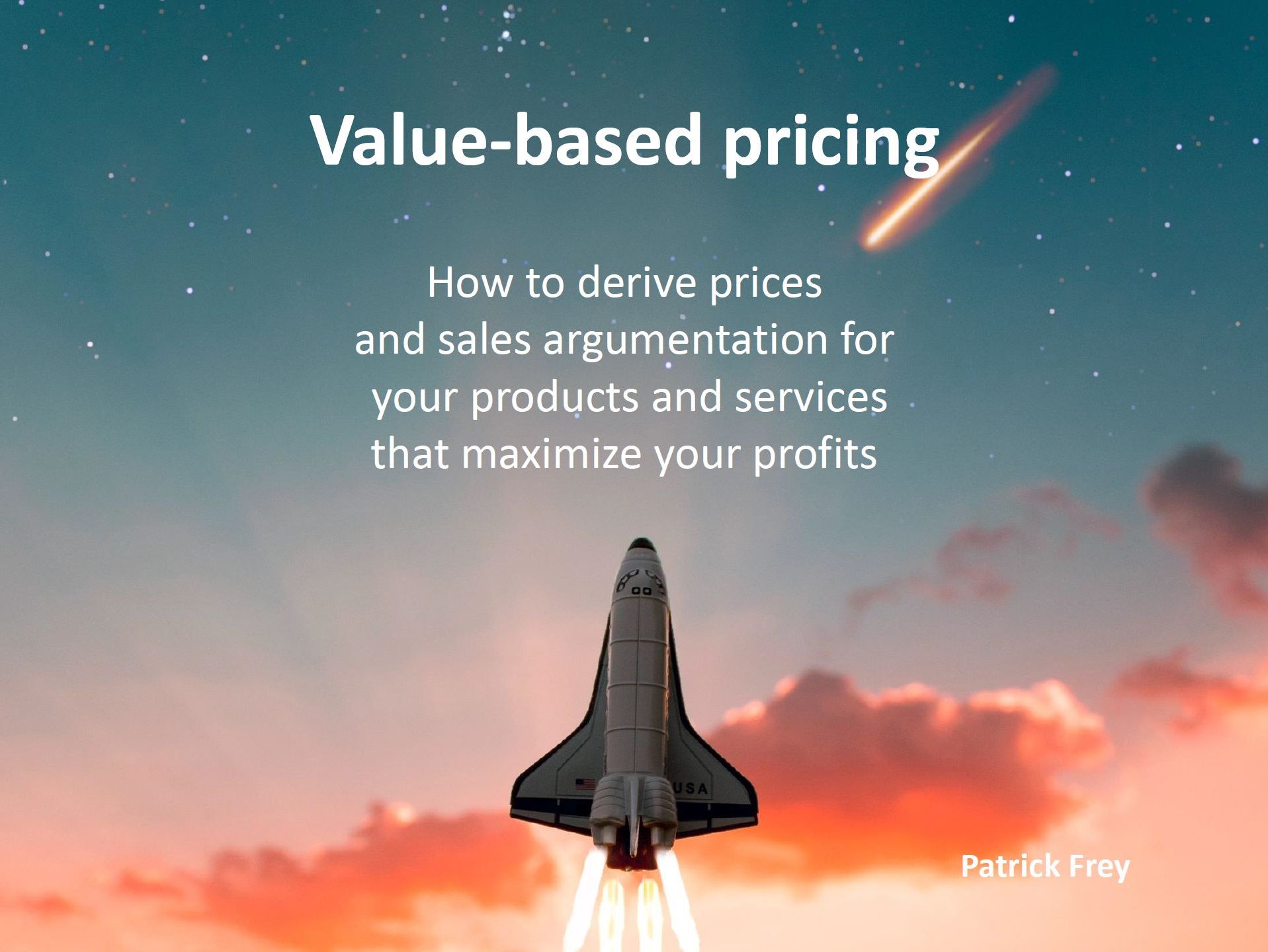Value-Based Pricing
Value-based pricing is a method for deriving and arguing prices for products or services based on the value that it creates for your customer. Amongst pricing experts, the method is commonly deemed as being superior to other pricing methods such as cost-oriented pricing or demand-oriented pricing.
There are several steps involved in value based pricing:
- Value identification
- Value quantification
- Creating a customer business case
Value Identification
As a first step, you have to identify the values that your product or service creates for your customers and users.
In principle, you can categorize these into three classes:
- save time
- save money
- make money
But there can also be other values associated with your product or service. While it is important to also identify and list them, it is more challenging to put a price tag on them.
Competitive Advantages / Unique Selling Points (USPs)
In any market, there are typically various alternatives that your customers can chose from.
So why should they chose you and your product or service?
To make a point in your sales argumentation, you have to identify the competitive advantages or unique selling points (USPs) that your product or service has compared to other solutions.
Value Quantification
As a next step, you have to quantify the value that is created by your solution for your customers and its users.
Quantifying value includes to come up with figures for
- how much value is created
- how often is the value created or consumed
Customer Business Case
Successful selling on value starts with providing a credible and convincing (business) case for your customers.
The customer business case should answer
- why is it worth for your customer to invest in your product or service at all
- why should a customer choose your product or service over another solution
Total value created (TVC)
The total value created (TVC) is the monetary benefit that your customer obtains by using your product or consuming your service. In the end, it is a figure expressed in USD, EUR, etc.
The total value created can be derived by combining the results of the value identification and the value quantificication.
Note that not all values that could be created by your product or service are also perceived by all of your customers and users.
In this step, it can thus also make sense to break things down into individual market segments.
Switching cost
Typically, your customers and users already have some solution in place to get the tasks done or needs fulfilled.
These are alternative or substitute solutions.
Introducing a new product or service thus have some switching cost involved. These costs are typically hidden for you, but not for your customers and users.
Switching costs can be related to shutting down existing systems or services (e.g., terminating a contract), re-organizing or introducing new processes as well as setting up new systems or services (at best, your products or services).
Total cost of ownership (TCO)
The total cost of ownership (TCO) is the total value created (TVC) minus the switching costs that it takes to introduce your product or service.
If the TCO is a positive figure, and if its size sufficiently significant to contribute to your customers business success, then this makes it a sound case for your customers to invest in your solution and make business with you.
Sales argumentation
In B2B, selling often involves to work together with and ultimately convince various stakeholders at the customer.
Stakeholders at customers typically are
- Specialist departments with the actual users
- Senior or executive management at the customer who decide on budgets
- Purchasing responsibles who decide on supplier selection and conditions
Based on the total cost of ownership and the individual calculation steps towards the latter, compelling value-based sales argumentations can be derived that address the interests of each of the stakeholder groups.
For example, while specialist depratments are often concerned with gaining efficiency and saving time, senior and executive management are more interested in saving money or making (more) money.
Summary
Value-based pricing is a method for deriving and arguing prices for products or services based on the value that it creates for your customer.
- In value identification, the value drivers are identified that align with the interests of your customers and users such as saving time, saving money and making money
- In value quantification, it is identified how much value is created by your product or service at your customers and how often this is happening
- The customer business case builds a credible sales argumentation by pointing out the total cost of ownership of your product or service for your customer. This includes pointing out the total value created as well as the switching costs involved.
Resources
ebook
In the eBook, I explain how to apply value-based pricing for products and services that are developed using agile methods. Especially, I outline which supporting methods can be used to identify and quantify values more easily.
Slides
In the presentation, I explain how to apply value-based pricing for products and services that are developed using agile methods. Especially, I outline which supporting methods can be used to identify and quantify values more easily.
Interested?
If you’re interested in value-based pricing, don’t hesitate to get in touch (patrickfreyleanpm@gmail.com | freypatrick)!
There’s a lot of material that I have developed to teach the approach as well as tools to apply it.

